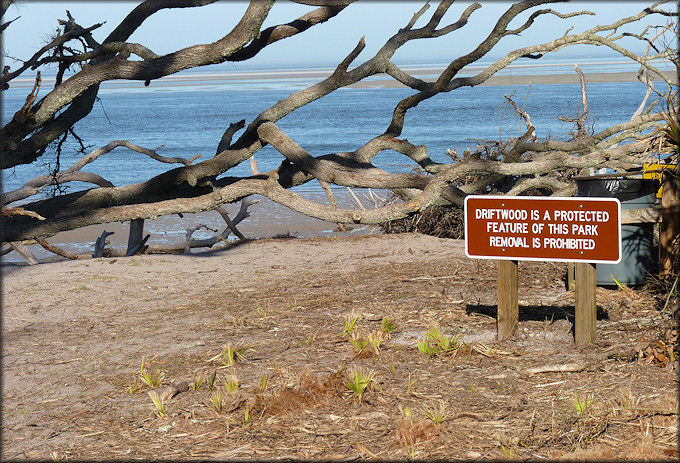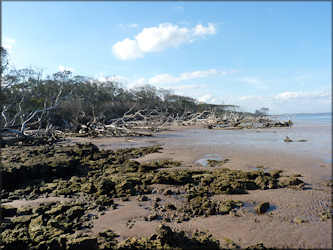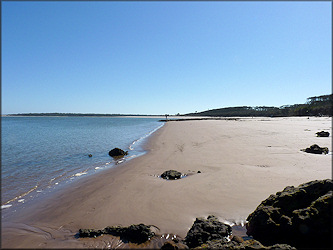|
Big Talbot Island State Park - Ft. George, Florida |
|
| Located about twenty-three miles from downtown Jacksonville, Big Talbot Island is one of only a few undeveloped barrier islands left along the Atlantic Coast and the island shoreline is unlike any other in northeast Florida. Wind and wave action have eroded the shoreline and sculpted the eastern appearance of the island. The power of this dynamic action has created a bluff of up to thirty feet. Organic soil formations called "Black Rock" are also exposed on the shoreline. The entire island is a State Park. Florida State Parks are managed as natural systems. All plant and animal life is protected. Do not remove, deface, mutilate or molest any natural resources. | |
|
|
|
|
Intersection of the Black Rock Trail with the beach (1/12/2013) |
|
|
((click on the pictures for a higher resolution version)) |
|
|
North view from Black Rock Trail |
South view from mid-island |
|
Discussion: Bounded on the north by
the Nassau River/Nassau Sound, on the south by
Simpson Creek/salt marsh,
and shielded from the open Atlantic Ocean on the east by a series of
constantly shifting sand bars/islands, Big Talbot Talbot
Island offers a variety of molluscan habitats found no where else in
Duval County. These include mud, muddy sand, sandy beaches, "Black
Rock"
formations, and oyster bars. Overall, the area could best be described
as "rough terrain" and one should exercise caution.
Additionally, the island has sustained severe shoreline erosion since
2005 and at times access to the beach is somewhat difficult. Alligators have
also occasionally been seen on the beach and a visitor was
attacked by an eight-footer during July of 2001. Because of the rough terrain and the lack of easy
access/suitable bathing beaches, the visitor load is not high and you
may have the entire area to yourself, other than summer weekends. The
primary and most
scenic method to gain access to the beach is via the Black Rock Trail which entails a relaxing ten-minute walk through
the unspoiled maritime hammock. Other access is available from a small
parking lot just south of the Nassau River Bridge. However, parking is
limited in this lot which is operated by the park. Shelling: Big Talbot Island is probably the last easily accessible area within Duval County which in any way represents what might have existed 20 or more years ago in regards to molluscan fauna. Whether it's the larger species such a Busycon perversum (Linnaeus, 1758) or the smaller easily overlooked specimens (some un-named), this is the place to visit if diversity is your goal. Screening the muddy-sand bottom at wading depth can yield an amazing variety of small shells. Some noteworthy species which can be found here include Fulguropsis spirata (Lamarck, 1816) (very uncommon in Northeast Florida) and Oliva sayana form citrina Johnson, 1911 - including a specimen measuring about 70 mm. Although Big Talbot Island is primarily known to local shell enthusiasts for its marine species, the island also offers the opportunity to observe Duval County's ample terrestrial species (see link below). |
|
|
Shelling With The Park Rangers - A New Marine Species For Northeast Florida |
|
|
History Of The Talbot Islands - 6,000 Years Of Human Habitation |
|


